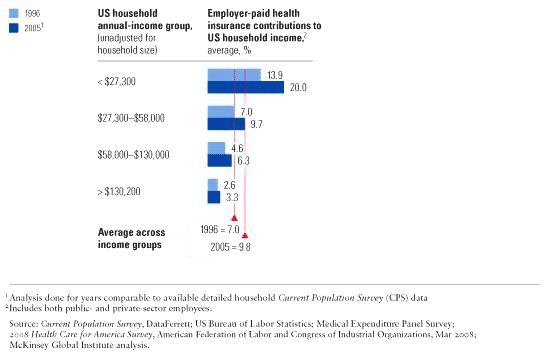
Waiting for has ended for tech-geeks and smartphones shoppers worldwide: The brand new features and specs of Apple’s iPhone 7 were announced right now to great online acclaim. (And most just a little snark, too.)
Americans possess the most to rejoice about—they reside in a country where iPhone costs are in their cheapest. Global consumers do not have it so lucky.
All over the world, great disparities exist between iPhone prices. For example, consumers in Indonesia and Norway will covering out much more to have an iPhone 6 compared to the U . s . States. This pales compared to what you’d pay in South america: $931, versus $598 in the usa. For individuals keeping score, that’s 56% more.
What’s Using the Different Prices?
How come iPhone prices vary so extremely from nation to nation? Apple continues to be charged with cost discrimination previously, though this finger-wagging has decreased recently. (Though nobody argues that Apple wrings just as much profit as it can certainly from its device sales.)
Indeed, based on World Economic Forum data, to buy a iPhone in South america has dropped significantly in the past 5 years. Just this past year, that very same iPhone 6 cost Brazilians a monstrous $1,250. This shift is basically credited to Brazil’s currency gaining 10% from the dollar.
Like a Cult of Mac author noted in May, “(T)he fluctuating cost from the iPhone isn’t nearly Apple being greedy: rising and falling prices rely on forex rates, import taxes, regional taxes and, in some instances, even apparently unconnected rules like private copying levies.”
That’s what’s happening in Germany. There, Apple’s phones and tablets are more expensive as a result of unique “agreement that Germany’s trade associations make with legal rights holders, to pay for ‘private copies’ of media designed to your iPhone or iPad,” Cult of Mac reported in The month of january. This expense is made to offset any financial losses copyright holders may be experiencing because of pirated digital content. German consumers be forced to pay several euros more, when they have been pirated tunes on their own iPhones or otherwise.
Fluctuating currency values don’t help, either. Last September, the weakened euro drove France’s iPhone prices sky-high. Then, an entry-level iPhone model cost over 30% greater than exactly the same model within the U.S. Consumers in Germany were similarly hit hard. Within the United kingdom, consumers compensated nearly $185 more for the similar unlocked device open to Americans.
Consumer perceptions (and marketed prices of merchandise) will also be affected by taxes. Prices within the United kingdom along with other countries include florida sales tax, though this isn’t the situation within the U.S. and Canada—making United States sticker prices appear lower. The effectiveness of the U.S. dollar further spiked prices in Canada and Australia this past year.
To become obvious, “Apple isn’t making 30% more revenue per iPhone in France compared to the U.S.,” the Telegraph reported this past year, “because many of the extra cost is within taxes.”
Indeed, because the Telegraph story advised its British readers, “This doesn’t always mean you should purchase the iPhone … in your next visit to America. Even if you’re inside a condition without florida sales tax, you will be likely to pay VAT onto it when you turn up during the United kingdom.”
This value-added tax is very full of Europe: from around 20% in Germany to as much as 25% in Hungary, PhoneArena reported captured.
Apple Controls the Purchase
Internet discussion boards brim with global consumers who wish to purchase lower-priced iPhones from Apple’s online U.S. store. The issue? Apple’s U.S. store doesn’t ship products to addresses outdoors from the U . s . States. Further, individuals “may not export any products purchased online from Apple,” the organization warns.
U.S.-based customers can, however, use Apple’s U.S. site to buy iPhones as gifts, and ship these to buddies in markets including Mexico, greater than a dozen europe, and 4 Parts of asia: Indonesia, Malaysia, the Philippines and Thailand.
Although not everybody all over the world has such accommodating American buddies … and individuals which do might not reside in the countries pointed out above. These consumers frequently concoct clever methods to purchase new unlocked iPhones in the U.S.—often via third-party sites like eBay—and ship these to their house markets. To operate correctly in overseas markets, these iPhones should be unlocked, and should not be connected having a local telephone carrier.
Package-forwarding services like MyUs offer tips about how to do that. “Even whenever you include worldwide shipping costs, it’s frequently still a great deal cheaper to purchase an apple iphone right out the U.S.,” MyUs lately advised.
Consumer-Friendly Solutions
We lately printed your blog publish about how exactly European companies—in light from the elevated critique of geo-blocking, a typical practice where companies limit use of their worldwide websites with different user’s geographic location—can control geo-based prices in consumer-friendly ways.
Companies all continents, as well as in all industries, can usually benefit from these tips. By leveraging website translation and special technologies that MotionPoint provides, expanding companies can serve their overseas customers with techniques that generate more engagement and revenue. Such solutions include:
- First of all, firms that offer converted versions of the websites in in your area-preferred languages will generate much more interest from consumers in target markets than websites printed solely in British.
- By converting not just on-websites content but other critical elements for example URLs and sitemaps—and using proper linguistic “hreflang” tagging for search engines—organic traffic increases dramatically.
- Leveraging optimizations that enhance-site user encounters for global consumers may also incentivize people to stay and shop. Such localizations may be used to create resonant campaigns, display market-specific inventories and much more.
From scalable translation methods to traffic- and engagement-boosting technologies, MotionPoint’s platform empowers companies to smartly increase mix-border traffic and purchasers around the world, regardless of what they might be selling—from fashion to worldwide flights to iPhones, and beyond.
Call us to find out more.
Resourse: https://motionpoint.com/blog/apples-iphone-and-global-cost-disparities/
Here's How Much Every Part Of The iPhone 6 Really Costs
COMMENTS:
haravtar: aaand thats not including the box
Luyang Che: Box:\n$0.10
PumperWolf: That's do not include Jony Ive's salary.\nLOL
Ivan Ivanovich: i say bullshit, costs way less than that.
M al Khodair: عملية التفكيك هي عبارة عن عملية الحقيقة بخصوص سعر أي منتج، ويتعرض لها أي هاتف حديث الصدور على يد مجموعة من الخبراء يفككون الهاتف ويجمعون تكلفة الأجزاء للتعرف على السعر الحقيقي للجهاز حيث أن أغلب الشركات تسعى للربح الكثير في وحدات معدودة فقط.\nوهذا ما قامت به شركة أبل في هاتفها الآيفون 6 و الأفيون 6 ، وبعد قيام مجموعة من خبراء مجلة Teardown بتفكيك الهاتف توصلوا الى أن الأيفون 6 بلغت كلفة تصنيعه 227 دولار أمريكي بينما بلغت تكلفة الأيفون 6 بلس 242 دولار .\nو هذا يدل على ان أبل تحقق أرباحا طائلة على كل وحدة مباعة من الآيفون 6 والذي بلغ سعره بين 649 دولار و 849 دولار بينما يكلف الايفون 6 بلس ما بين 749 دولار و 949 دولار
Robotic Deluxe: I wonder how much they put into building the MacBook Pro probably not a lot the name makes it expensive
ajdo pajdo: haha but i think they paid first to design a iphone then the parts then for the assembly
Super Duper Hyper Ultra Mega Double Extra Triple Extreme Infinity: Seems to me that these may not be the correct prices for each part for Apple.\n\nIs this the market price for the parts in the US or are these the market prices for individual pieces including the bulk price that a large scale corporation such as Apple would buy them for?
Ruangprai Limsuwansiri: in Thailand 5s 16 Gb = USD $ 760.07
 Iphone Haiti relief
Iphone Haiti relief 


